This drawing shows a position where ice became important.
Click on image for full size
Windows Original
The position of Saturn when gas changed to ice
The position of the planets in the solar nebula affected how big they became and what they were made of. The blue line in the picture shows where it became so cold that ice began to form.
Planets that formed beyond the blue line drew ice and molecules of rock and gas. Keeping ice resulted in these forming planets becoming big and full of gas. The planets that formed close to the sun became small and full of rock.
You might also be interested in:
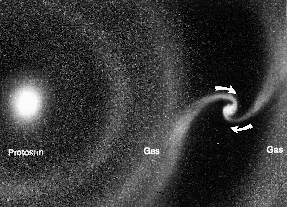
As shown in this picture, while they were forming in the solar nebula, the core of the planets-to-be drew material to themselves from the cloud of gas and dust around them. The bigger planets-to-be were
...more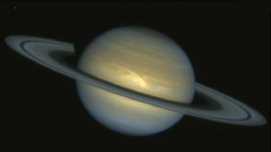
The most important motions in the atmosphere are winds. The major winds in Saturn's atmosphere are the zonal winds which are made of zones and belts. Zones and belts blow in opposite directions around
...more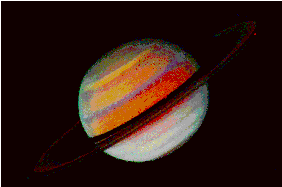
The clouds on Saturn, like Jupiter, are divided into stripes called "belts and zones". In a belt, very powerful winds blow one way. In a zone, very powerful winds blow the other way. These kinds of winds
...more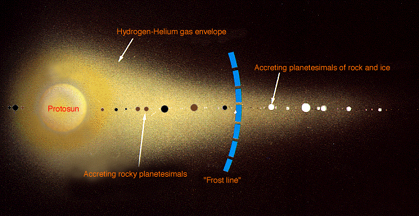
The position of the planets in the solar nebula affected how big they became and what they were made of. The blue line in the picture shows where it became so cold that ice began to form. Planets that
...more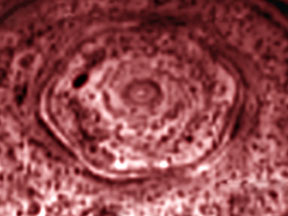
Astronomers have discovered a strange shape in Saturn's atmosphere. The shape is a hexagon. The hexagon is near Saturn's North Pole. Scientists aren't quite sure why Saturn has the hexagon shape in its
...more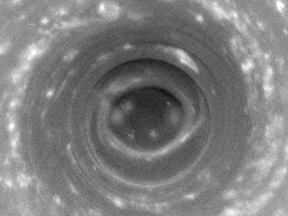
If you wanted to go someplace warm for a vacation, would you choose the South Pole? If you lived on Saturn you might! Saturn's South Pole is the warmest place on the ringed planet. Watch out for the weather,
...more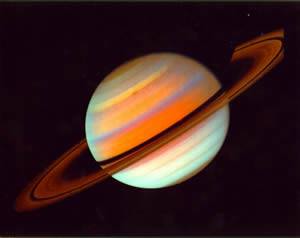
Saturn is the second largest planet in our solar system. It is also very bright in the sky. The ancient Greeks named the planet after the god of farming and time. The rings of Saturn were first seen by
...more














